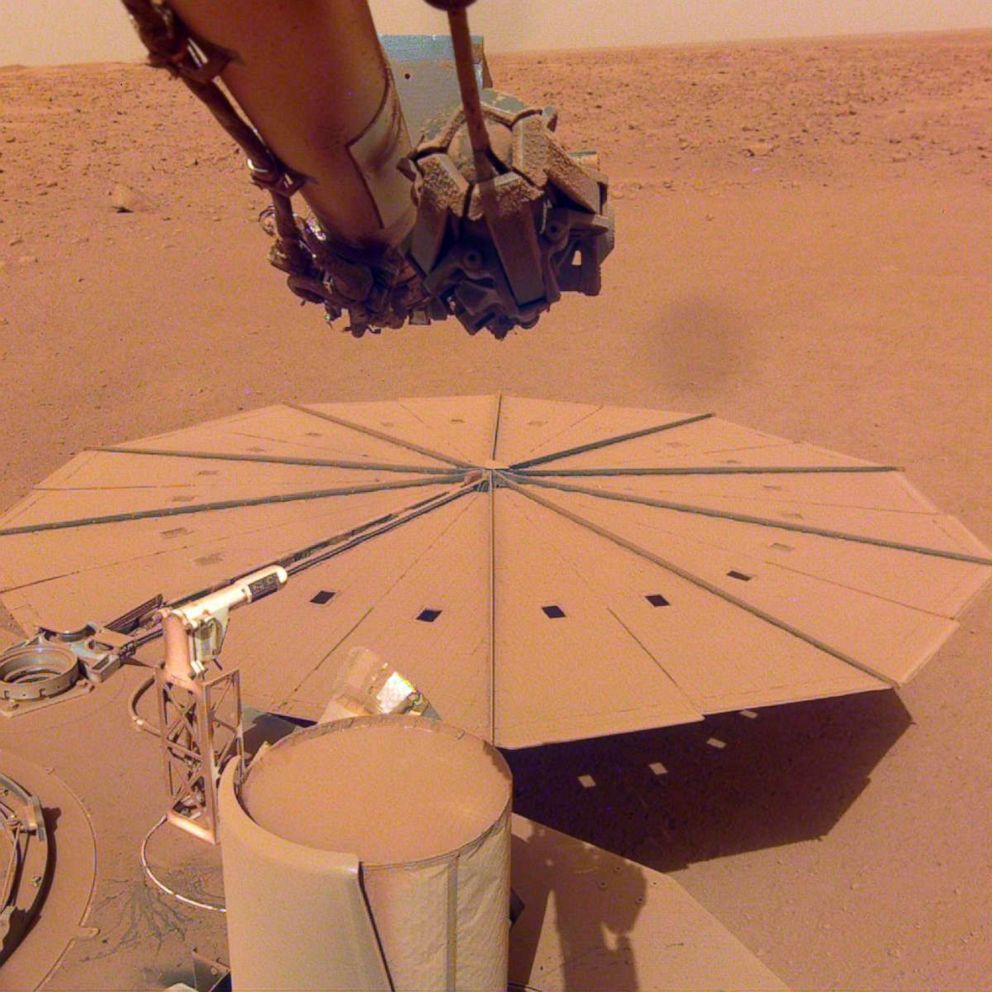Mars lander losing power because of dust on solar panels
The spacecraft landed in 2019 to study the deep interior of the planet.
NASA is being forced to end its Mars lander mission early because of dust.
Officials announced Tuesday the InSight spacecraft is slowly losing power because its two solar panels are covered in dust.
Morever, the dust levels in the atmosphere are only increasing and sunlight is decreasing as Mars enters winter, which is speeding up the loss of power.
Power levels will likely die out in July -- effectively ending operations -- and, by the end of the year, project leaders expect InSight will be "inoperative."

"People can obviously relate to, in their own homes, they have to dust because dust settles," Chuck Scott, InSight’s project manager, told ABC News. "It's the same sort of thing with these solar panels. We have dust in the Mars atmosphere that gets kicked up because of the local weather ... storms where you get the dust kicked up because you have lot of wind."
"Since Mars's atmosphere is thinner, it goes up into the upper atmosphere and it can get distributed more widely than it would on Earth and it'll deposit back down on whatever's below including our spacecraft and the solar panels," he added.
InSight is currently generating about one-tenth of the power it was when it landed on Mars in November 2018.
When the spacecraft first landed, the solar panels were producing 5,000 watt-hour for each Martian day, enough to power an electric oven for an hour and 40 minutes, NASA said. Currently, the panels are producing 500 watt-hour per Martian day, only enough to power an electric oven for 10 minutes.
Project leaders had expected the gradual dust buildup on the solar panels, but had hoped passing whirlwinds on Mars might have cleaned some of it off, but none have so far.
"Two rovers we sent back in 2003, they both experienced what we would call 'natural cleaning' or 'dust cleaning events,'" Scott said. "Those winds went over the vehicles and cleared a lot fo the dust off the solar panels of those vehicles. We were were kind of hoping this would occur with a stationary lander."
Due to the lower power, the team will put InSight's robotic arm in a resting position known as "retirement pose" later this month. Then, by the end of the summer, the lander's seismometer will only be turned on at certain times, such as night when winds are not as high.
Because energy is being preserved for the seismometer, NASA said non-seismic instruments "will rarely be turned on" starting next month.
InSight has detected more than 1,300 quakes since its landing, the most recent of which occurred on May 4. The data gathered from the marsquakes have helped scientists understand the composition of Mars's deep interior, including the planet's crust, mantle and core.
NASA said the lander had completed its primary goals during its first two years on Mars and was currently on an extended mission.
"There wasn't really anything known about the interior of Mars," Scott said. "Why that's important is NASA had been looking at how our own planets formed in the Solar System. especially the rocky ones like Venus, Earth, Mars and even our own Moon."
This is not the first time NASA has ended a Mars lander due to dust.
Opportunity, a robotic rover, landed on the planet in 2004 and was in operation until June 2018, when a global dust storm completely covered its solar panels, which ended communications with project leaders.









